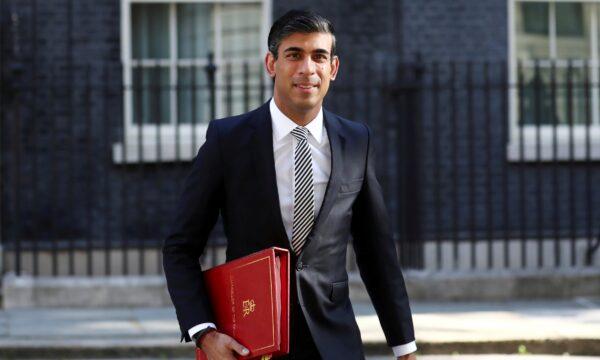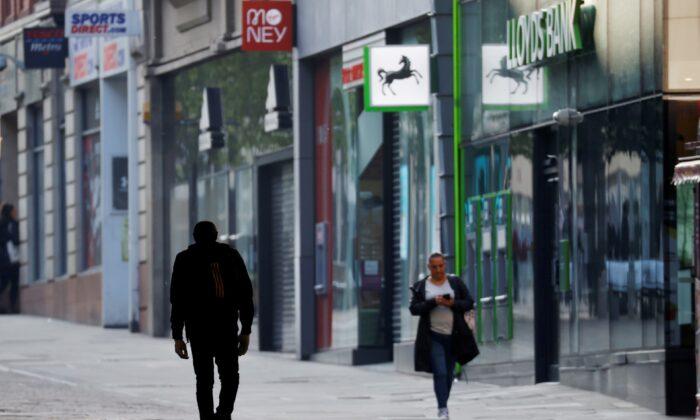LONDON—British government borrowing surged to a record 128 billion pounds ($162 billion) in the first three months of the 2020/21 financial year, when COVID-19 lockdown measures were tightest, more than double the entire previous year’s borrowing.
Most economists think British government borrowing this year will be its largest since World War Two relative to the size of the economy.
Borrowing in June, excluding state-owned banks, was 35.5 billion pounds, the government statistics office said. That was five times more than a year earlier though below economists’ average forecast of 41.5 billion pounds in a Reuters poll, following a big downward revision for May.
April, May, and June made up the three highest months of borrowing in Britain’s history, even though spending on job support was lower than first estimated, and tax revenues higher, the Office for National Statistics said.
Following the figures, finance minister Rishi Sunak restated his intention to put the public finances on a more sustainable footing over the medium term, and launched a much-delayed long-term review into government spending.
But analysts doubt the economy will be strong enough for him to start tightening fiscal policy later this year.

“If (interest) rates remain as low as they are currently—and it is likely the Bank of England will make sure they do—the chancellor may just decide to push out those difficult decisions a little longer,” HSBC economist Elizabeth Martins said.
Last week Sunak set out up to 30 billion pounds of new measures, partly to encourage businesses to take workers back when he ends a furlough scheme supporting more than 9 million jobs in October.
Public sector debt, excluding state-owned banks, stayed a fraction below the milestone of 100 percent of gross domestic product it appeared to pass in May, after an upward revision to GDP, and now stands at 1.984 trillion pounds or 99.6 percent of GDP.
This is still the highest debt burden since the 1960s, the statistics office said.
Bond markets have been happy to finance this borrowing, however. At a bond auction on Tuesday investors bought a six-year gilt with a record-low negative yield, meaning the government will pay back less than it borrowed.
Britain’s government has announced extra spending and tax cuts worth around 192 billion pounds for this financial year, and last week its Office for Budget Responsibility estimated borrowing would hit 322 billion pounds or just over 16 percent of GDP.
This figure is based on a scenario where the economy shrinks by 12.4 percent over 2020, and the unemployment rate rises to its highest since 1984 at 11.9 percent by the end of this year.
The OBR said borrowing was currently running 15 percent below this scenario—though it noted the official figures were likely to be revised, and did not yet include any provision for write-offs of government-backed lending to businesses.






Friends Read Free